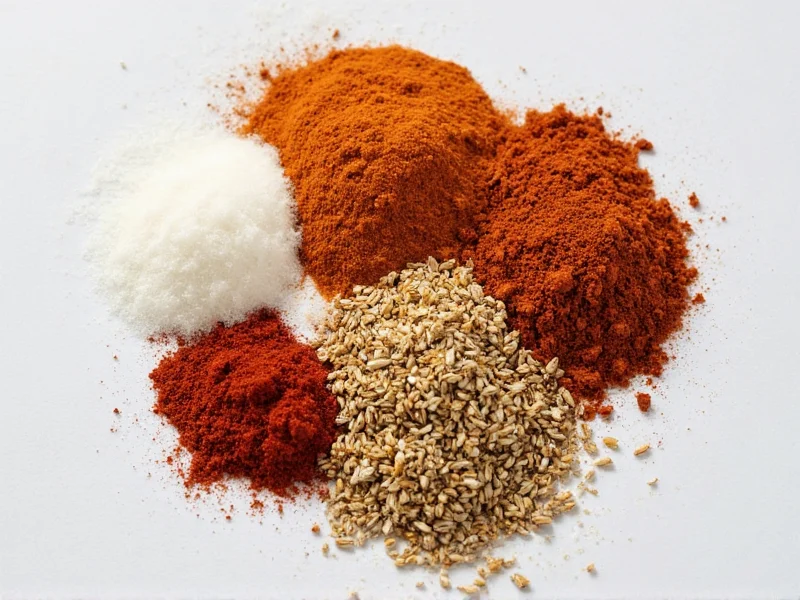Creating a deeply flavorful beef stew relies heavily on proper spice selection and application. While the quality of your beef and vegetables forms the foundation, the right spices transform a simple dish into something extraordinary. Understanding which spices complement beef's rich umami profile—and how to use them—is essential for home cooks seeking restaurant-quality results.
Essential Spices for Beef Stew
Not all spices work equally well with beef stew's long cooking process. The best options withstand simmering while developing complex flavors. Let's examine the core spices every beef stew should include:
Bay Leaves: The Flavor Enhancer
Bay leaves provide subtle depth without dominating. Their mild bitterness balances the stew's richness. Always use 2-3 dried bay leaves per pot, added at the beginning of cooking. Remove before serving as they become brittle. Many home cooks underestimate how many bay leaves for beef stew—too few won't impact flavor, while too many creates bitterness.
Thyme: Earthy Complexity
Thyme's earthy, slightly floral notes pair perfectly with beef. Dried thyme works better than fresh for long simmers as its flavor concentrates. Use 1 teaspoon dried thyme per 2 pounds of beef. For best spices for traditional beef stew, combine thyme with rosemary in a 1:1 ratio. Add early in cooking to allow full flavor extraction.
Rosemary: Bold Aromatic
Rosemary's pine-like aroma cuts through richness. Use sparingly—1 teaspoon dried rosemary per pot prevents overpowering. Crush dried leaves between your fingers before adding to release oils. For spice combinations for rich beef stew, pair rosemary with garlic and black pepper. Fresh rosemary works too, but use half the amount as dried.
Smoked Paprika: Depth Without Heat
Smoked paprika adds subtle smokiness that mimics slow-cooked flavors. Unlike regular paprika, it won't make your stew spicy. Use 1 teaspoon for a standard pot. This is essential for how to season beef stew properly when you lack access to smoked meats. Add during the sauté phase to bloom flavors in fat.
| Spice | Amount (per 2 lbs beef) | When to Add | Flavor Contribution |
|---|---|---|---|
| Bay Leaves | 2-3 leaves | Beginning of cooking | Subtle depth, balances richness |
| Thyme | 1 tsp dried | Beginning of cooking | Earthy complexity |
| Rosemary | 1 tsp dried | Beginning of cooking | Bold aromatic notes |
| Smoked Paprika | 1 tsp | Sauté phase | Smoky depth |
| Black Pepper | To taste | Last 30 minutes | Sharp finish |
Secondary Spices and Finishing Touches
While the core spices form your foundation, these additions create dimension:
Garlic and Onion: Aromatic Base
Fresh garlic (3-4 cloves) and onion (1 large) form the flavor base. Sauté until golden before adding liquid. For essential herbs for beef stew recipes, never skip this step—raw garlic becomes bitter when simmered too long. Add garlic in the last minute of sautéing to prevent burning.
Black Pepper: The Finishing Touch
Add freshly ground black pepper in the last 30 minutes of cooking. Early addition makes pepper flavor dissipate. For classic beef stew seasoning blend, use coarse pepper for visible texture and complex heat. White pepper works too but lacks visual appeal.
Worcestershire Sauce: Umami Boost
Two tablespoons adds depth without making the stew taste 'sauvy'. Contains tamarind, molasses, and anchovies that enhance meat flavors. Add during the last hour of cooking. This is crucial for homemade beef stew spice mix when using leaner cuts of beef.
Spice Combinations That Work
Understanding flavor chemistry helps create balanced seasoning:
- French Style: Thyme + bay leaves + parsley (added at end) + touch of tomato paste
- German Style: Caraway seeds + juniper berries + marjoram + mustard powder
- American Midwest: Smoked paprika + garlic powder + onion powder + dash of cider vinegar
For spice combinations for rich beef stew, avoid mixing more than 5-6 spices total. Overcomplicating masks beef's natural flavor. Always bloom dried spices in fat before adding liquid—this how to season beef stew properly technique unlocks maximum flavor.
Common Spice Mistakes to Avoid
Even experienced cooks make these errors:
- Adding all spices at once: Delicate herbs like parsley lose flavor when simmered too long
- Using old spices: Ground spices lose potency after 6 months—check freshness before cooking
- Over-salting early: Salt concentrates as liquid reduces—season gradually
- Skipping acid: A splash of red wine vinegar or Worcestershire balances richness
Storage Tips for Spice Freshness
Fresh spices make the biggest difference in flavor. Store in airtight containers away from light and heat. Whole spices last 2-3 years; ground spices 6-12 months. Test paprika by rubbing a pinch in your palm—fresh paprika leaves orange stains. For best spices for traditional beef stew, buy small quantities from stores with high turnover.











 浙公网安备
33010002000092号
浙公网安备
33010002000092号 浙B2-20120091-4
浙B2-20120091-4